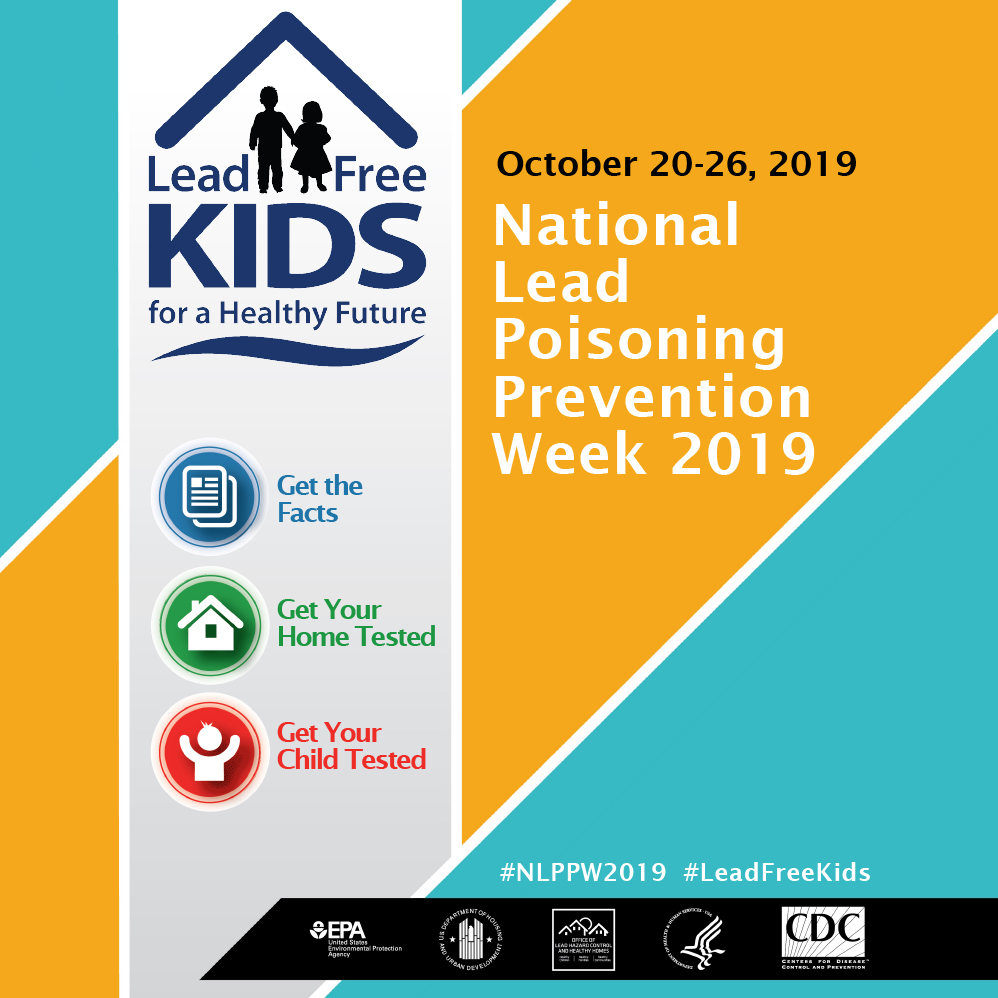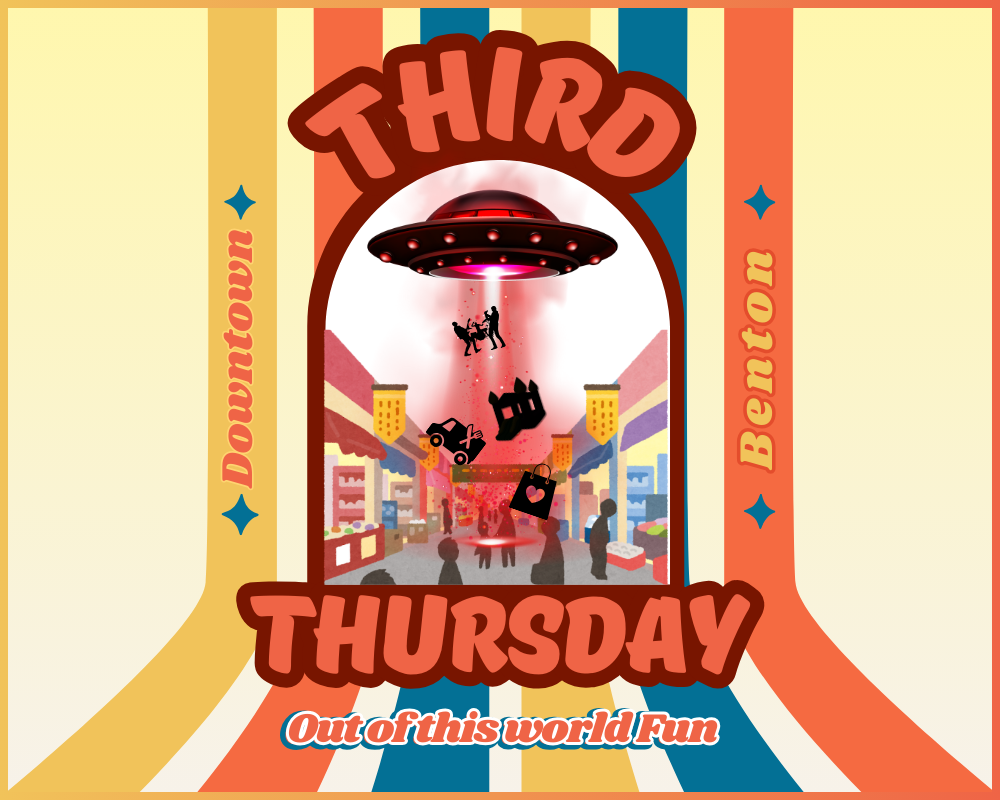
Federal and State agencies are organizing activities to bring awareness and education to the dangers of lead exposure, especially for children.
National Lead Poisoning Prevention Week (NLPPW) highlights how parents can reduce children’s exposure to lead in their environment, preventing serious health effects from lead poisoning. To raise awareness of childhood lead poisoning prevention, the Arkansas Department of Health (ADH), the Centers for Disease Control and Prevention (CDC), the U.S. Environmental Protection Agency, and the U.S. Department of Housing and Urban Development, are participating in NLPPW October 20-26.
ADH will be participating in multiple activities in Arkansas throughout the week. To learn more about lead exposure, visit ADH’s Lead-Based Paint Program at the following events in support of NLPPW:
- Monday, Oct. 21: Lowes (Jacksonville), 2301 TP White Drive, Jacksonville, 9 a.m.-1 p.m.
- Tuesday, Oct. 22: A Healthy Dose of Wellness, 5 Municipal Drive, Jacksonville, 9 a.m.-2 p.m.
- Thursday, Oct. 24: Big Boo!seum Bash, Witt Stephens Jr. Nature Center, Little Rock, 5:30-8 p.m.
- Saturday, Oct. 26: University of Arkansas District Wellness Fair, Donaghey Student Fitness Center, Little Rock, 9 a.m.-1 p.m.
Lead has been banned in the United States in paint and gasoline since the 1970s. It is toxic to the human body. Exposure to lead can result in lead poisoning, which occurs when lead enters the bloodstream and builds up to toxic levels. It is especially dangerous for children six years old and younger as their brains and spinal cords are still developing. The effects from lead poisoning during early childhood development can be severe. Even in small amounts, lead can cause damage to the brain and nervous system which can cause learning and behavior problems, slow growth and development, as well as hearing and speech problems. Some of these effects may persist beyond childhood. For pregnant women, harmful effects include premature births, smaller babies, and miscarriage. There is no safe level of lead exposure.
Childhood lead poisoning is considered the most preventable environmental disease among young children, yet approximately half a million children in the United States have blood lead levels above 5 micrograms per deciliter, the level at which the CDC says public health actions should start. In 2018, there were 210 children in Arkansas reported to have blood lead levels above 5 micrograms per deciliter.
Children with high blood lead levels were most likely exposed to lead in their own homes from leaded dust and lead-based paint chips, especially in homes built before 1978. Children can also be exposed to lead in contaminated drinking water, take-home exposures from a workplace, lead in soil, and from some metal toys or toys painted with lead-based paint. According to the CDC, at least 3.6 million households have children under six years of age being exposed to lead exposure hazards. Despite the continued presence of lead in the environment, lead poisoning is entirely preventable. A simple blood test may be able to help prevent permanent damage from occurring.
The NLPPW theme, “Lead-Free Kids for a Healthy Future,” underscores the importance of learning how to prevent lead poisoning as well as testing your home and your child.
Parents can reduce a child’s exposure to lead in many ways. Here are some simple ways to protect your family:
- Get the Facts: Find out about the hazards of lead. The Arkansas Department of Health (ADH) can provide you with helpful information about preventing childhood lead poisoning. Contact them at 501-671-1472 or review the ADH Lead-Based Paint Program website here.
- Get Your Home Tested: Find out how to minimize risks of lead exposure by hiring a certified professional to test older homes for lead. Water pipes in some older homes may contain lead solder where lead may leach out into the water. Learn more about lead in drinking water here.
- Get Your Child Tested: A simple blood test can detect lead. Consult your doctor for advice on testing your children.
The only way to fully rid a pre-1978 home of lead is to abate it. Abatement should always be done by a state-certified contractor. Abatement involves the removal of lead-based paint and dust-lead hazards; the permanent covering or encapsulation of lead-based paint; the replacement of parts or fixtures painted with lead-based paint; and the removal or permanent covering of soil-lead hazards, as well as all set-up, cleanup, disposal, and post abatement clearance testing actions linked to such measures.
Owners of homes built prior to 1978 who do not wish to fully abate lead hazards should be careful when disturbing lead-based paint. Homeowners should only hire federally-certified Renovation, Repair and Painting (RRP) contractors, to make sure that the work is done in a lead-safe way. This protects people living in the home from hazards connected with renovation, repair and painting. Done in the wrong way, these activities can create harmful leaded dust when lead paint is disturbed.
Further steps you can take to reduce exposure are:
- Wash your child’s hands before meals and after playing outside.
- Provide your child with meals and snacks that are high in iron, calcium and Vitamin C.
- Frequently wash toys, pacifiers and other items your child uses regularly.
- Dust and wet mop weekly.
- Have your family members leave their shoes outside the door.
- Ensure that any home renovation and maintenance work is done in a lead-safe way.
For more information, contact the Lead-Based Paint Program at 501-671-1472 or contact the National Lead Information Center at 1-800-424-LEAD.




